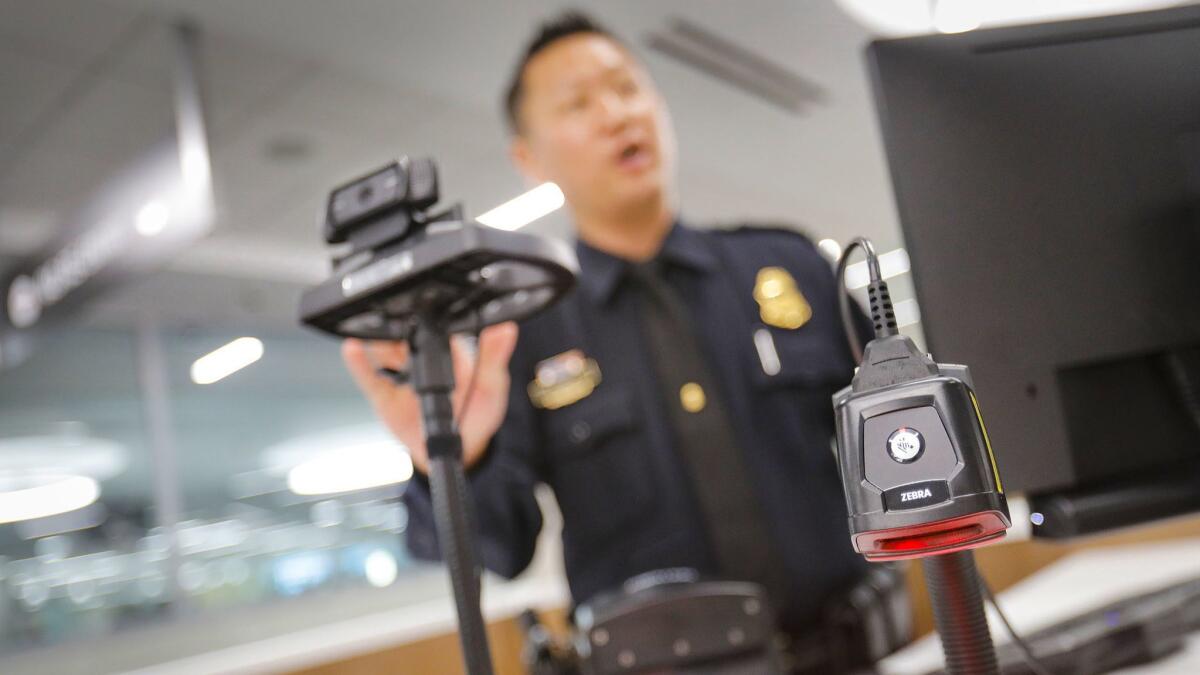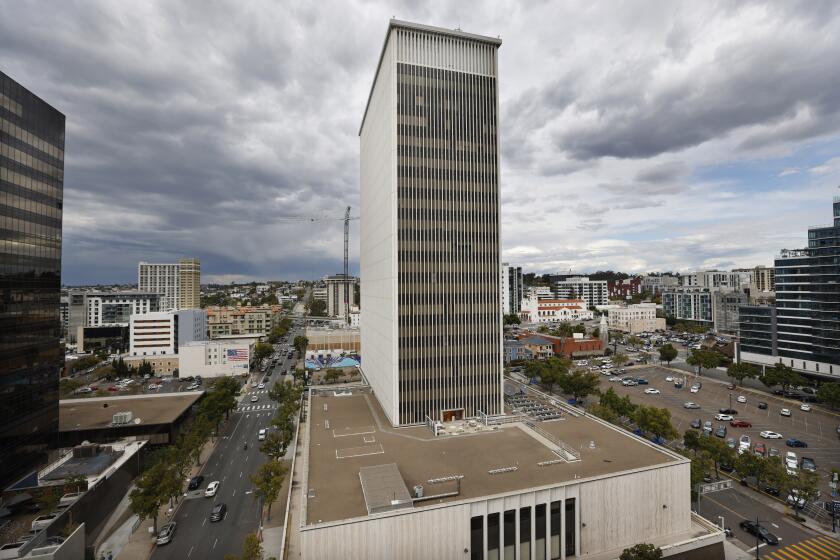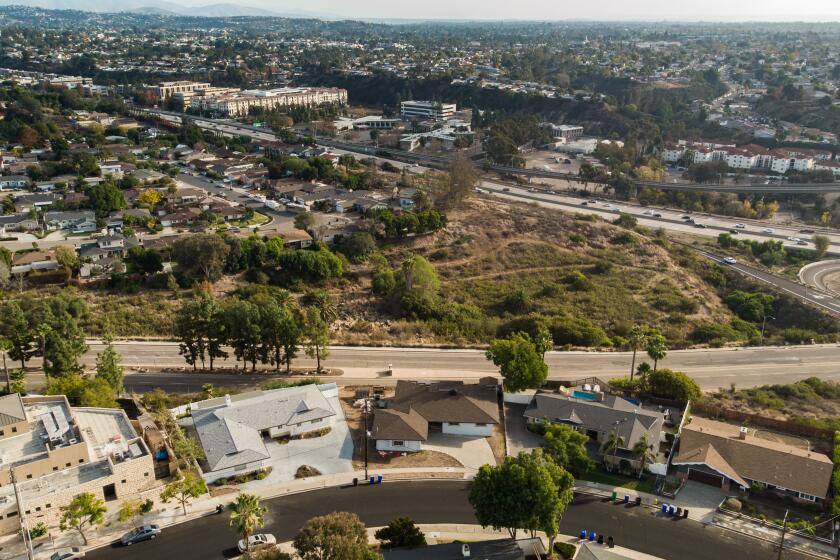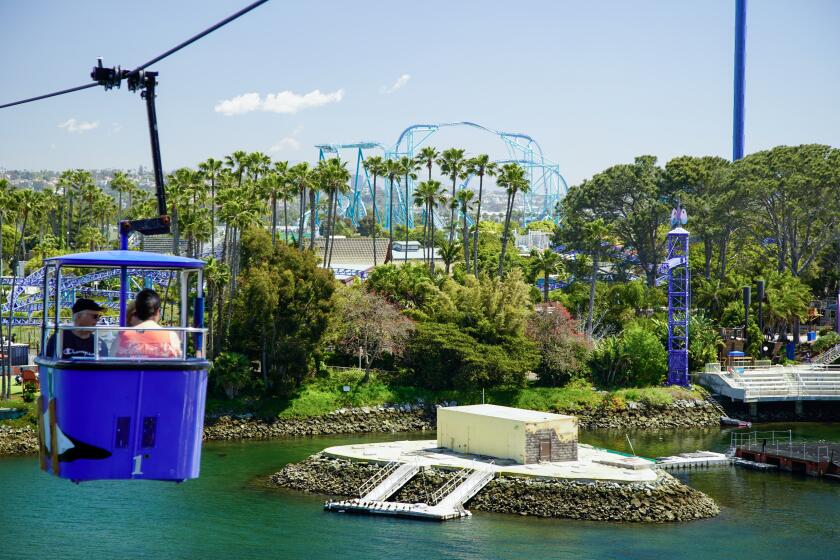Facial recognition tech speeds up customs at new San Diego airport facility

With the debut of a new $229.4 million international arrivals facility, people entering San Diego from other countries will find that Lindbergh Field is now equipped with a biometric identification system that promises a speedier trip through customs.
Starting Saturday, international travelers, beginning with passengers arriving from a Japan Airlines flight out of Tokyo, will be processed through San Diego’s modernized 130,000 square-foot arrivals facility. Located at the west end of Terminal 2, the space is five times larger than the previous international arrivals area and is punctuated by a wealth of natural light, views of San Diego and two custom art installations.
The experience, however, culminates with a federal inspection process where facial recognition technology is employed to get people in and out of customs expeditiously.
“The volume of passengers we can now service is vastly different from the facility we were in,” said William Synder, port director for U.S. Customs and Border Protection. “Paramount is the new technology with biometric technology and facial recognition that speeds up the process and provides the security that we need.”
A priority for the U.S. Department of Homeland Security for years, the enhanced identification technology is part of the Customs and Border Protection agency’s recently completed biometric entry-exit tracking system, called the Traveler Verification Service. Upon entry to the country at participating airports, travelers going through primary inspection (and not Global Entry) will have their photo captured by a web cam and matched in near real-time against a passport or visa photo already on file.
Matching is done using facial recognition software, with the process taking less than a second and replacing a scan of the passport, said Sung Hyun Ha, the entry-exit transformation project manager at Customs and Border Protection.
Customs and Border Protection is currently working with airlines and airports to roll out the biometric system at airports around the world, with San Diego International one of the first in the nation to implement the facial scan tech at entry. Other U.S. airports already using the more sophisticated entry system include Miami International Airport, Atlanta Airport and Orlando International Airport. As it stands, photos captured of U.S. citizens during the process are stored for up to 14 days before being deleted with the agency’s goal to eventually purge the data more immediately. The biomteric data of non-U.S. citizens can be saved for up to 75 years.
“Using facial recognition software programs can increase the number of people that are processed per hour by 25 percent,” said Henry Harteveldt, a travel industry analyst at Atmosphere Research Group. “Having used these tools at different airports, I can say that it saves a lot of time and it gets you on your way with a lot less hassle. They’re really a godsend to the traveler.”
And despite the collection and storage of sensitive biometric data, a majority of U.S. airline passengers, or 68 percent, are comfortable sharing that information with government agencies when traveling, according to an Atmosphere study conducted earlier this year.

Currently, San Diego International Airport is a relatively small destination for overseas travelers, served by British Airways, Lufthansa, Japan Airlines and Edelweiss on a limited basis. Alaska Airlines, Southwest Airlines, Spirit Airlines, Air Canada and WestJet also conduct nonstop flights to and from Mexico and Canada.
In total, the airport reported more than 400,000 international passenger arrivals in 2017, with the corresponding trips generating around $432 million in annual economic impact, according to the San Diego County Regional Airport Authority. Airport Authority staff expect the improved arrivals facility to attract even more overseas airlines to the airport.
As of Saturday, the airport will feature four international gates, up from three previously. A second phase of development, scheduled to be completed next year, will add two more international gates for a total of six gates, simultaneously accommodating three wide-body and three narrow-body aircraft.
Beyond being more spacious and efficient, the facility is also meant to impress travelers with a Gensler-design emblematic of San Diego’s indoor-outdoor lifestyle. Arriving passengers will walk through light-flooded gateways and hallways before reaching the automated passport control kiosk area.
At baggage claim, where visitors stop before customs, people will find a 225-foot long piece of art, called “Carry On,” comprised of 52 glass panels and featuring 624 photos. And, in the public waiting area, 25 swirling ladders are suspended over head to symbolize a converging of journeys at the airport.
Completed in a little over a year, the project was funded through air travel fees, general airport revenue bonds and airport cash.
Business
jennifer.vangrove@sduniontribune.com (619) 293-1840 Twitter: @jbruin
Get U-T Business in your inbox on Mondays
Get ready for your week with the week’s top business stories from San Diego and California, in your inbox Monday mornings.
You may occasionally receive promotional content from the San Diego Union-Tribune.












